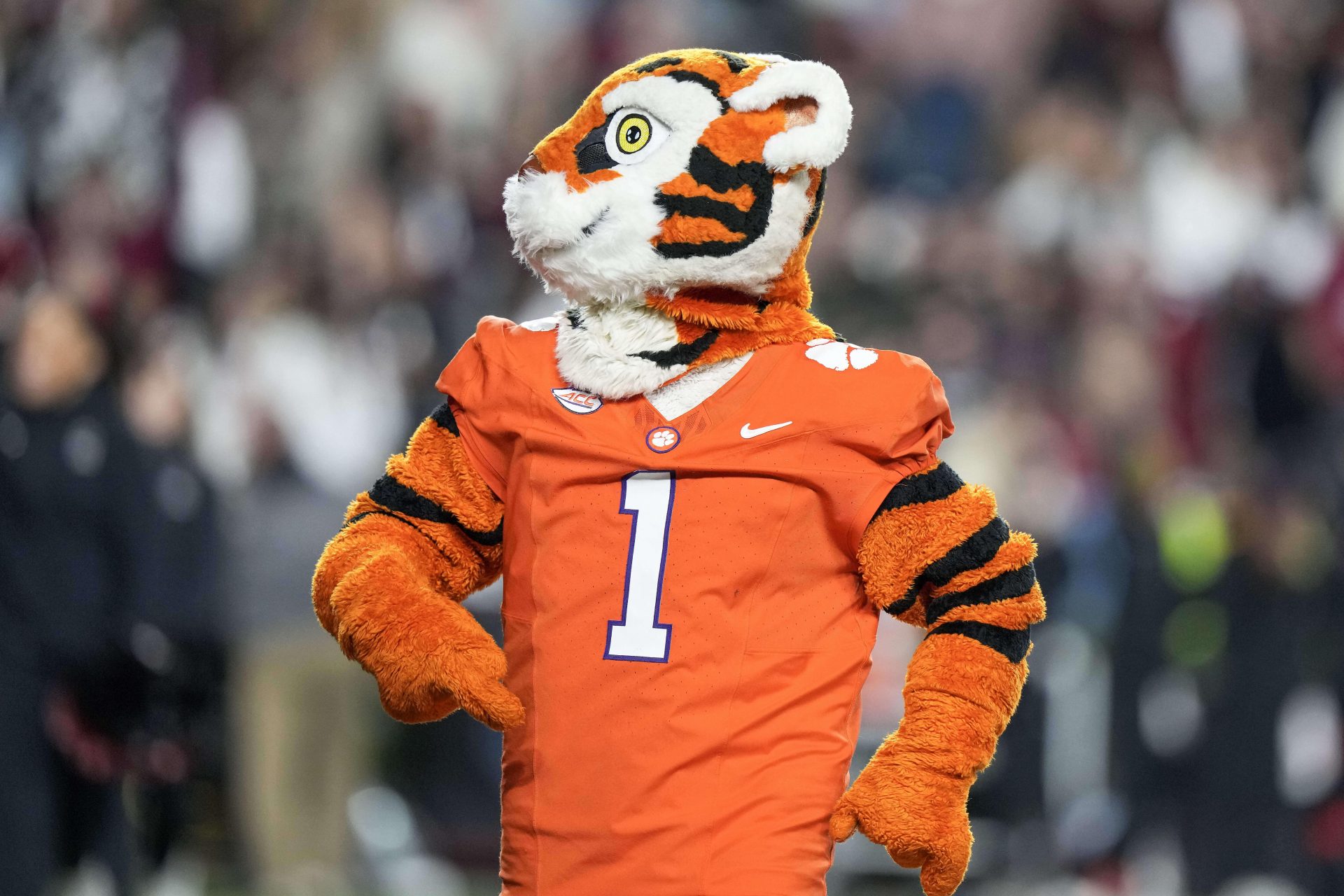College football is unique for several reasons, chief among them is the pageantry and pride shown for programs by alumni and fans alike. No amount of pageantry would be complete without the role of mascots.
There are over 134 different teams in FBS, with as many varied and different backgrounds as there are teams. Interestingly, Clemson is one of 13 schools represented by the “Tiger” at the Division I level. How did the mascot come to be, and in what ways does the history help tell the story that the Tiger now represents? Let’s take a look at that history.

Who (or What) Is the Clemson Tigers’ Mascot?
The story of every mascot begins with the founding of the university it represents. Clemson was established in 1889 as a land-grant school by the name of “Clemson Agricultural College of South Carolina.” The mouthful of a name was shortened to Clemson University in 1964 following the school’s expanded academic offerings and research pursuits.
The Tiger nickname first made an appearance in 1896 when Walter Merritt Riggs brought football to the university. Riggs had previously coached at Auburn where the team had also been called the Tigers and brought the name with him. Riggs later became a university president and the selection of the Tiger was complete.
The attributes of strength, ferocity, and cunning were a few of the reasons for the selection of the Tiger as the mascot. At the time, the school was using a costumed mascot called the Country Gentleman, featuring a student dressed in a purple suit and top hat with a cane. The symbol of the tiger was used in cheers, fight songs, and imagery but not as a tangible figure.
MORE: Simulate the College Football Season with CFN’s College Football Playoff Predictor
The evolution from the Country Gentleman to The Tiger took place around the 1950s as student Gabby Hayes created a costume consisting of a tiger-striped bodysuit and a papier-mâché head. The costume stuck, and the evolution has continued ever since.
In the ’60s and ’70s, more improvements and modifications were made to the original suit, such as replacing the head with a more durable version and the suit itself becoming more elaborate and realistic. With the changes, being The Tiger became a coveted position among Clemson students, and tryouts were held to find the best candidate.
Why Is Clemson the Tigers?
Clemson is unique in that there was never a record of a live tiger mascot at the school, and The Tiger doesn’t have a name. In 1993 the school introduced a companion mascot, The Cub, who wears shorts, oversized sneakers, and a jersey numbered ½. The Cub and The Tiger have approximately four costumes each that the university maintains.
The Tiger is one of the most well-known traditions that has spread in popularity. Beginning in 1978, student Zach Mills started doing push-ups after every score, equal to the number of points Clemson had in the game. The record for most pushups stands at 465, and Mills set the original mark at 287. The push-up tradition has had such a positive impact that other schools across the country now copy it.
Fans also began a tradition called The Tiger Tail in the ’70s as well. On game days, fans would attach purple and orange tiger tails to their vehicles in support of the school. Just another way in which the Tiger has become representative of Clemson not just as a mascot, but as a part of the school’s identity.
After more than a century, The Tiger remains a crucial part of Clemson University’s history and spirit, from traditions and sporting events to an archive of old costumes, photographs, and memorabilia that the school maintains detailing the mascot’s evolution. The Tiger continues to represent the core values of Clemson and maintains the school’s spirit and pride and likely will continue to do so deep into the future.

